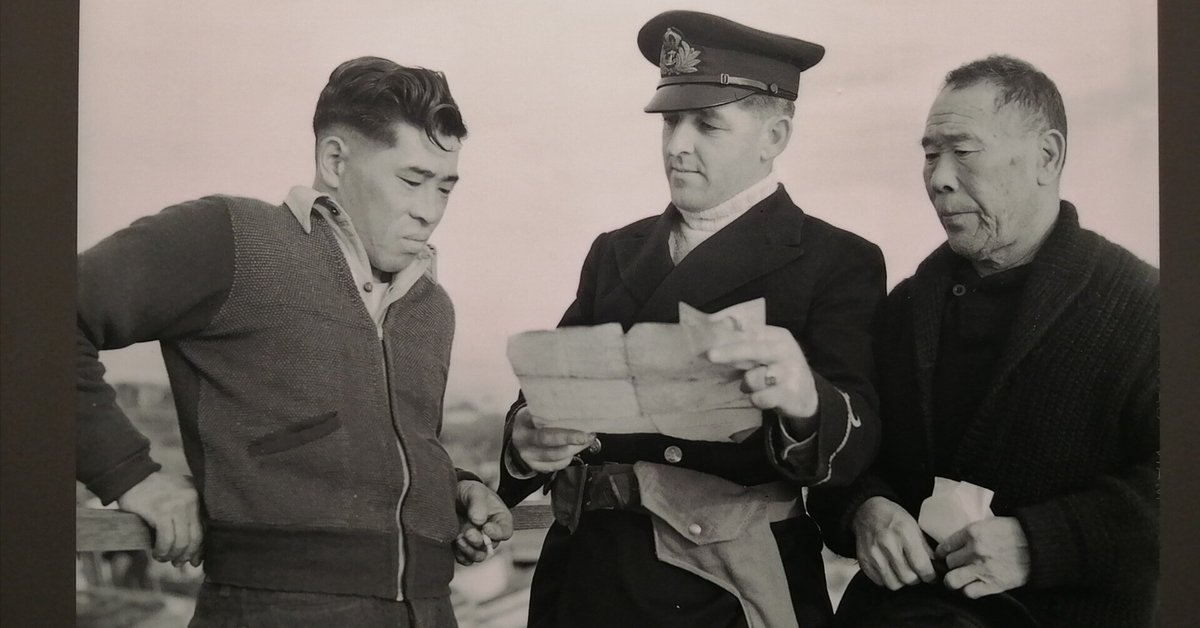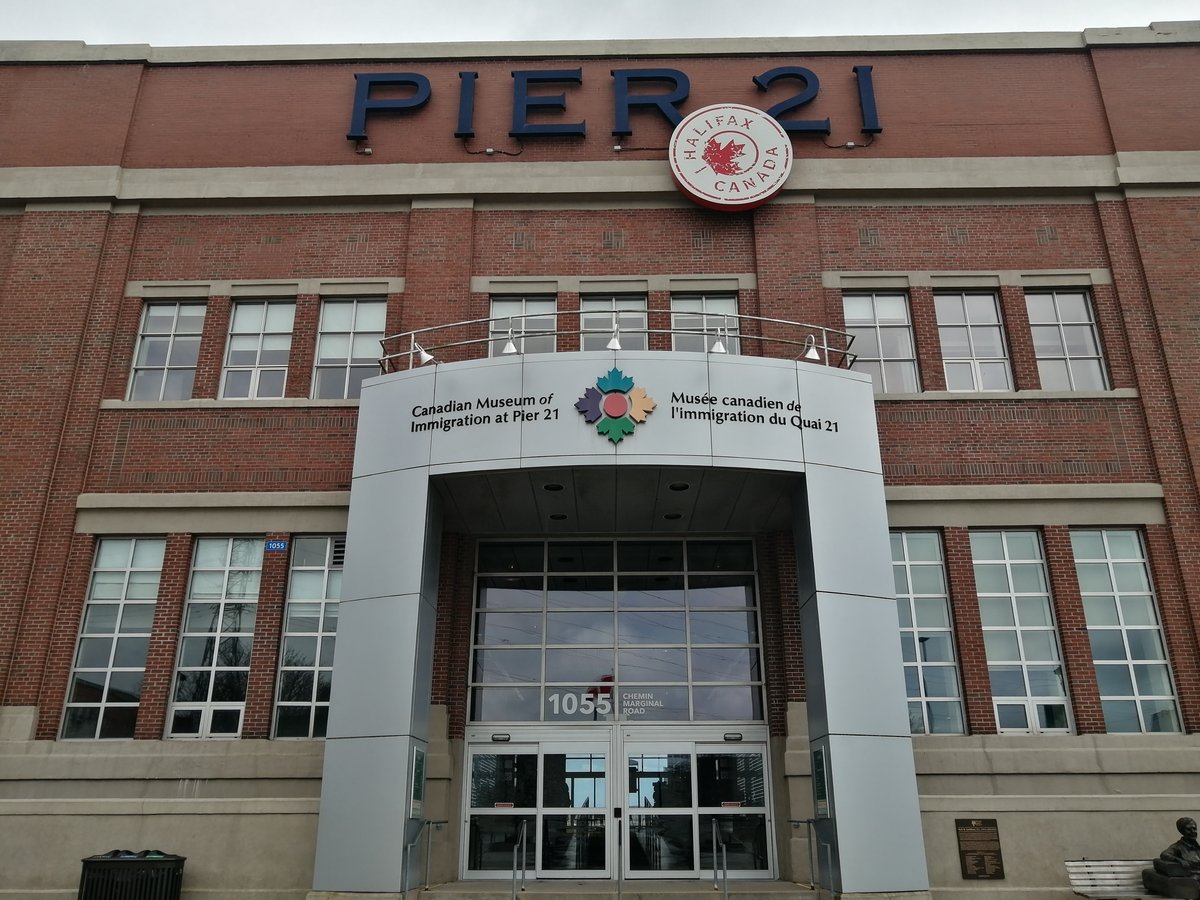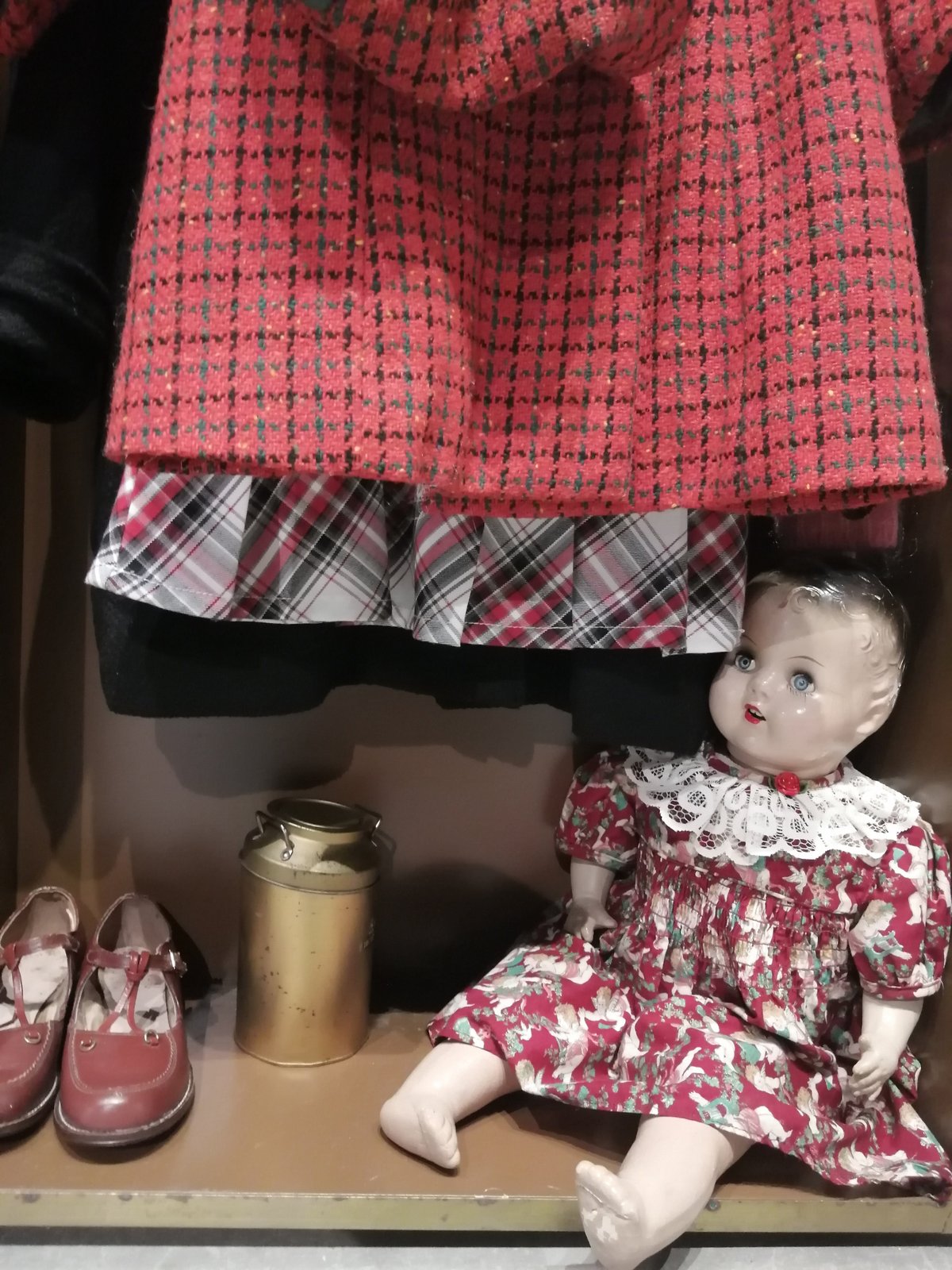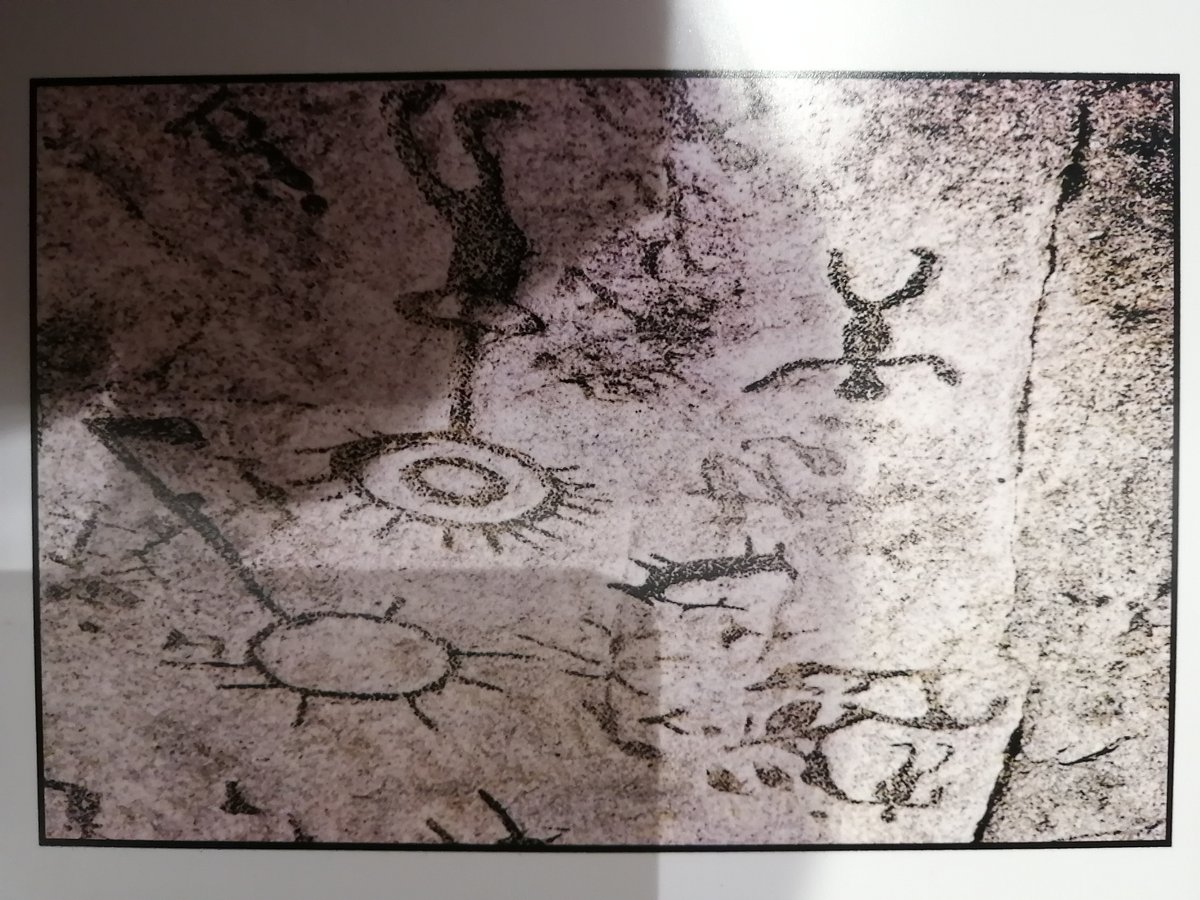
カナダ移民博物館にて移民の歴史を学ぶ Canadian Museum of Immigration LADDER 3
カナダのハリファックスにてカナダ移民博物館に来ました。こちらのPIER 21はハリファックスの港に面した建物で、その昔主にヨーロッパからの移民が船で初めて到着する場所、入国管理局という位置づけ。1928年の開業から1972年の閉業まで約100万人の移民や難民がこのPIER21からカナダに入国しました。
待合室、税関審査、拘留施設や医療施設があり、1900年代の初めにもかかわらず、病気を持ち込ませないように医療のサポートが充実していました。コロナ禍の時の空港の体制を彷彿とさせます。
I visited the Canadian Museum of Immigration in Halifax, Canada. PIER 21 is a building facing the harbor in Halifax and was once the first port of entry for immigrants, mainly from Europe, who arrived by ship.
It had waiting rooms, customs screening, detention facilities and medical facilities, and even in the early 1900s, medical support was in place to keep people from bringing in illnesses. It is reminiscent of the airport system during the Corona disaster.

今は建物の一部がカナダ移民博物館に、他は大学やショッピングセンターになっています。
Part of the building is now the Canadian Museum of Immigration, and the rest is a university, shopping center, etc.
第一次世界大戦(1914-1918) 、ヨーロッパ諸国からカナダへの難民が増加。
1929年の世界大恐慌の勃発はカナダの移民政策に重大な対応をもたらす。移民を出自、資本、職業によって定義された狭いカテゴリーで分類し、貧困層の受け入れを禁止。
第二次世界大戦(1939-1945)中イギリスからカナダへの子供の疎開も行われた。ゲスト・チルドレン」と呼ばれ約4,000人の子供たちがイギリスの公的資金でカナダに渡った。1940年夏にゲスト・チルドレンの載った2隻の船が魚雷攻撃を受け、80人近い子どもたちが亡くなった。
World War I (1914-1918); increased numbers of refugees from European countries to Canada.
Outbreak of the Great Depression in 1929 brings significant responses to Canadian immigration policy. Immigrants were classified in narrow categories defined by origin, capital, and occupation, and the admission of the poor was prohibited.
Evacuation of children from England to Canada during World War II (1939-1945) also took place. In the summer of 1940, two ships carrying guest children were torpedoed, killing nearly 80 children.
展示は主にヨーロッパ諸国からの移民のもの。客船も飛行機のようにランク分けがあり、ハイクラスからエコノミークラスまで。
The exhibits are mainly of immigrants from European countries. Cruise ships are also ranked like airplanes, from high class to economy class.

荷物の持ち込みに限りがある中、何を必要として選んだかにその人その家族の姿が現れてきます。
With limited baggage allowance, what a person and his/her family choose to bring in their baggage reflects what they thought priority.



そしてまた、持ち込み禁止で手放さなければならなかった食べ物たち。港に着いたばかりでお金がないなかで唯一の食料。ここで取り上げられて列車で仕事場へ向かうまでの長い道のりをどのように凌いだらよいのだろうか、と当時の人々は不安になりました。
And also the foods we had to give up because some were not allowed to be brought in. The only food…, as they had just arrived at the port and had no money. How could they survive the long journey to the workplace by train after being taken away from here? They might have been so anxiuos.

当時は今のような荷物をスキャンするテクノロジーがないため、全てカバンを広げられて係員がチェック。つまり見つからなければ持ち込みOK、という感覚。コートの中にサラミをたくさん隠して持ち込もうという輩が続出。臭いでバレたそうです。
Back then, there was no technology to scan luggage like there is today, so everything in the suitcases was spread out and checked by security guards. In other words, if they didn't find it, it would be OK to bring it in. Many people tried to bring in a lot of salami hidden in their coats. They were detected by the smell.

移民管理局で書類に不備なく通過できた人はここから汽車に乗ってそれぞれの目的地へ向かいます。
英語がわからず入国の質問に答えられなくて入国できない人は一旦拘留所に留置されて助けを待ちます。英語ができない人のためにボランティアの通訳の方もいたそうです。また犯罪者や違法薬物を持っている人も拘留所へ。

Those who were able to pass through the Immigration Office without any deficiencies in their documents will take a train from here to their respective destinations.
Those who cannot enter the country because they do not understand English and cannot answer the immigration questions are detained in a detention center and wait for help. There were volunteer interpreters for those who could not speak English. Criminals and people with illegal drugs are also detained in the detention center.

その前に売店で食材を買うことができましたが、見慣れない食品に戸惑ったそうです。今でも海外に行くと同じような経験をします。スーパーに並ぶ缶詰商品、SPAM(コンビーフのような食べ物)が謎肉すぎて口に合わず困った話、食パンがふわふわすぎてパンと思われず枕として使った人がいるというエピソードを聞きました。
Before that, they were able to buy food at a store, but they were uneasy about unfamiliar foods. I still have the same experience when I go abroad. I heard a story about a canned product in a supermarket, SPAM, that was too mysterious meat for immigrants, and about a person who used soft bread as a pillow because it was too fluffy and not considered bread.

ここでの展示はどちらかとううとヨーロッパ諸国側から見た移住の地カナダ、厳しい環境にありながら頑張って土地を切り開いたヨーロッパ人を讃えよう、という感じの印象を受けます。
The exhibition here gives the impression me that it is more about Canada from the perspective of European countries, and about celebrating the Europeans who worked hard to carve out a place for themselves in spite of the harsh environment.

先住民 Indigenous
移民がやってくるということはもちろん先住していた人たちがいたということであり、その土地や文化を巡っての争い、差別、非人道的な対応による大きな傷がカナダのもう一つの歴史を物語ります。
The arrival of immigrants means, of course, that there were people who lived here before them, and the great wounds caused by conflicts over land and culture, discrimination, and inhumane treatment are another part of Canada's history.
移民がやってくる前に住んでいた人たちは先祖代々の土地を奪われた。先住民族であるインディアンやイヌイットとの補償問題。カナダ政府は1999年になってやっと先住民の自治権を承認した。
2021年6月、カナダで閉鎖された先住民寄宿学校の敷地から215人の子どもの遺骨が発見された。カナダ政府は過去に先住民の子どもを家族から引き離して寄宿学校で生活させる同化政策「ファーストネーション」を実施した。同化政策は1867年のカナダ建国前から行われ、寄宿舎は全国で139校設けられ、15万人以上の児童・生徒が親もとから強制的に引き離されて生活していた。今回遺骨が見つかったのはバンクーバー北東のカムループスというのカトリック教会が運営していた寄宿学校の跡地。寄宿学校は1996年閉鎖された。
カナダ政府は2008年に正式に、この同化政策について先住民に謝罪している。こうした学校を数多く運営していたキリスト教カトリック教会は直接の謝罪をしていない。

カナダのこの地域に先住していたのはMétis (メティス)族、Mi'gmaq(ミックマック)族。私は知りませんでしたが学ぶ良い機会となりました。
しかし原住民の資料はそんなに多くありません。
The Métis and Mi'gmaq tribes were the indigenous of this region of Canada. I did not know them, but it was a good opportunity to learn about them.
However, there are not that many documents on the aboriginal people.
メティスはヨーロッパ人(主にフランス人、スコットランド人、イギリス人)と先住民の祖先の混血に由来する歴史と文化を共有しており、北米毛皮貿易の初期である18世紀半ばまでに民族発生によって区別されるようになった。
カナダのメティス族の人口は2021年時点で624,220人。1982年の憲法法で法的に認められた先住民族の3つの主要なグループのうちの1つ。他の2つのグループはファーストネーションとイヌイット。

ミックマック族は北東部森林地帯の先住民族で、カナダの大西洋岸諸州、主にノバスコシア州、ニューブランズウィック州、プリンスエドワード島、ニューファンドランド州、ケベック州ガスペ半島、およびメイン州北東部のネイティブアメリカンの先住民族である。ミックマックの伝統的な国家領土はミックマキ(Miꞌkꞌki)またはミックマギ(Miꞌgꞌgi)と呼ばれている。
カナダの2021年国勢調査によると、9,245人がミークマク語(東アルゴン系言語)を話すとされている。
ミークマク族、マリセット族、パサマクオディ族は、18世紀を通じてイギリス王室と平和友好条約の連鎖条約として知られる一連の条約に調印した。ミークマク族は、これらの平和友好条約によって土地の所有権やその他の権利を譲り渡したり放棄したりしたわけではないと主張している。1999年のR v Marshall事件におけるカナダ最高裁判所の判決は、「先住民族に狩猟と漁業を行い、交易を確立する権利を約束した」とする1752年の平和友好条約を支持した。

アジア系の移民 Immigrants from Asia
ごく僅かですが中国系移民にのみ不当に課せられた人種差別的な税金の話や第二次世界大戦で不当に財産を没収された日系移民の展示もありました。
こちらの写真は日系カナダ人の漁師が不当に船を没収されているところ。
The exhibit includes a few stories about racist taxes unfairly imposed only on Chinese immigrants and a display of Japanese Canadian immigrants whose property was unfairly confiscated during World War II.
The photo here shows a Japanese-Canadian fisherman whose boat was unjustly confiscated.

日本のパールハーバー攻撃で日系カナダ人の生活は激変します。
商売道具や家や家具、車やカメラなども全て没収されました。それらはカナダ政府によって売られ、強制労働先の住居等の建設に充てられたりしました。日系カナダ人はバンクーバーなどの太平洋沿岸からはるか東への移住を強制され、理由は海岸に住んでいると日本へスパイ活動を行うのではないかとの恐れなどだそうです。
没収された財産は戦後も全額戻ることはありませんでした。
The Japanese attack on Pearl Harbor changed the lives of Japanese Canadians.
Business tools, houses, furniture, cars, cameras, etc. were all confiscated. They were sold by the Canadian government and used to build forced-labor houses. Japanese-Canadians were forced to move far east from the Pacific coast, such as Vancouver, for fear that living on the coast would lead to espionage against Japan.
Confiscated property was never returned in full after the war.

展示には当時を語る日系カナダ人のインタビュー映像もありました。
その中でとても悲しく印象的だったのは「仕方がない」というムードが日系コミュニティ全体に広がっていたということです。
「その当時の日系人はどんなにも理不尽なことであっても政府の言うことに従順でとても扱いやすかったに違いない。退去と言われれば争うこともなく黙って荷物をまとめて指定された場所に移動した」
不当であると誰もが思っていながらも、逆らっても何も変わらずむしろ悪化するということを知り、「仕方がない」と状況を受け入れるしかなかったといいます。
The exhibit also included video interviews with Japanese-Canadians who recounted their experiences.
One of the things that struck me as very sad was the mood of "compromise, acceptance" that pervaded the entire Nikkei community.
"The Nikkei of that time must have been very easy to deal with, obedient to the government's orders, no matter how unreasonable they were. When they were told to leave, they didn't fight, they just quietly packed up their belongings and moved to the designated area."
Although everyone thought it was unfair, they had no choice but to accept the situation as "inevitable," knowing that if they disobeyed, nothing would change and, in fact, get worse.
1941年12月7日(日本時間で8日)に真珠湾攻撃によりカナダが日本と戦闘状態に入りました。その翌日から、カナダ連邦警察(RCMP)が日系コミュニティのリーダーなど38名を逮捕しました。
カナダ海軍は日系人が所有していた1,200隻の漁船の押収を決め、数日内に太平洋岸に停泊していた漁船はすべて、プリンスルパート、ナナイモ、ニューウェストミンスターの漁船集積所に集められました。
日本語学校は閉鎖され、日本語新聞も発刊停止となりました。これらの措置により反日感情はいったん落ち着きますが、12月25日に香港が陥落して多数のカナダ兵が捕虜となると、反日感情は再び激化、1942年に入ると西海岸を中心に日系人の集団立ち退きを求める声が高まりました。
1942年1月14日、連邦政府はブリティッシュ・コロンビア(BC)州の太平洋岸100マイル地域を「防衛地域」に指定し、18歳から45歳までの日本国籍の男性にそこから立ち退くよう命令しました。彼らは家族から引き離され、ロッキー山脈の奥地の道路建設労働キャンプへと送られました。
2月15日にシンガポールが陥落し、2月19日に「大統領行政命令第9066号」によってアメリカ合衆国の日系人の強制移動が決定すると、カナダ政府も2月26日の内閣令で、防衛地域内に住む「日本に人種的起源をもつ人物」全員の退去を命じました。
3月4日にはBC州保安委員会(British Columbia Security Council: BCSC)が組織され、バンクーバー以外の地域に住む日系人が、バンクーバーのへースティングス・パーク元博覧会場に集められました。
彼らは一人当たりスーツケース2つ分の手荷物のみを許され、家や自動車、農地のほか、家具や着物などの思い出の品も、すべて残して去らなければなりませんでした。へースティングス・パークでは畜舎が急ごしらえの集積所へと転用され、馬の糞尿の臭いのしみ込んだ建物が、男性用と女性・子ども用の区域に分けられました。
各区域には、1メートルも間隔を空けずに簡易ベッドがずらりと並べられ、女性たちはプライバシーを保つため、ベッドの周囲にシーツをぶら下げました。トイレに仕切りはなく、旧鶏舎が食堂として利用されました。
そして、立ち退きを命じられた日系人の多くは、このように自分たちの家を離れ、最終的には「キャンプ」と呼ばれる収容所に送られたのです。
On December 7, 1941, the attack on Pearl Harbor brought Canada into combat with Japan. Beginning the next day, 38 people, including leaders of the Japanese American community, were arrested by the Royal Canadian Mounted Police (RCMP).
The Canadian Navy decided to seize 1,200 fishing boats owned by Japanese Canadians, and within days, all fishing boats anchored along the Pacific coast were collected at fishing boat depots in Prince Rupert, Nanaimo, and New Westminster.
Japanese language schools were closed and Japanese language newspapers ceased publication. On January 14, 1942, the federal government announced that it would evacuate all Japanese Americans from the Pacific coast of British Columbia (B.C.).
On January 14, 1942, the federal government designated a 100-mile area on the Pacific Coast of British Columbia (BC) as a "defense zone" and ordered all Japanese males between the ages of 18 and 45 to leave the area.
After the fall of Singapore on February 15 and the February 19 "Presidential Executive Order No. 9066" forcing the removal of Japanese Americans from the United States, the Canadian government, by Cabinet Order of February 26, also ordered the removal of "persons of Japanese origin" living within the Defence Area.
On March 4, the British Columbia Security Council (BCSC) was formed and Nikkei living outside of Vancouver were gathered at the former Hastings Park Expo site in Vancouver.
They were allowed only two suitcases of luggage per person and had to leave behind their homes, automobiles, farmland, and any memorabilia such as furniture and kimonos. At Hastings Park, barns were converted into a hastily constructed collection center, and buildings soaked with the smell of horse manure were divided into sections for men and women and children.
In each area, cots were lined up in rows no more than one meter apart, and women hung sheets around their beds to maintain privacy. There were no partitions between the toilets, and the old chicken coops were used as dining rooms.
Many of the evicted Nikkei thus left their homes and were eventually sent to internment camps, known as "camps.
Miya さんの家族の歴史
今回のコラボレーターであるMiyaさんからご家族の歴史を記した本をお借りしました。

Miyaさんはご先祖を日本人に持つ日系四世です。
こちらの本のなかにも第二次世界大戦中にカナダ政府から課せられた厳しい処遇や生活の悪化について「しかたがない」という言葉が書かれていました。この言葉から彼らがどれだけ打ちひしがれていたか、子供たちのためにどれだけ自分を奮い立たせようとしていたかを想像します。
Miya is a fourth-generation Japanese-Canadian. In this book, it was also written about the harsh treatment and deterioration of her life imposed by the Canadian government during World War II, saying "Shikataganai". I can only imagine how devastated they were by these words and how much they were trying to believe they are OK for the sake of their children.

こちらの本のご紹介は後ほど。
🪜LADDER Project🪜
舞踏公演「Ladder 梯子」Butoh performance (28, 29 June)

日本の舞踏家、我妻恵美子とカナダのお面アーティスト、ミヤ・ターンブルによる新しい共同プロジェクトが始まります。第一歩目となる今年は舞踏とお面というお互いの芸術領域を組み合わせ、約20分間のパフォーマンスを創作します。またGozu Mezu (杉山仁志)によるこの作品の為のオリジナル音楽も必聴です。
We are really excited to announce our new collaboration project between Japanese Butoh Dancer, Emiko Agatsuma and Canadian Mask Maker, Miya Turnbull. We are thrilled to combine our artistic practices together to create a 20 minute performance. We are also really pleased to have original custom music by Gozu Mezu (Hitoshi Sugiyama).
会場:Bus stop theatre (ノバスコシア州ハリファックス・カナダ)
日時:2024年
6/28 (Fri) 7:30 pm
6/29 (Sat) 2:00 pm / 7:30 pm
Venue: bus stop theatre (Halifax, Nova Scotia, Canada)
Date: 6/28/2024 (Fri) 7:30 pm6/29/2024 (Sat) 2:00 pm / 7:30 pm
Ticket fee: $10-20 CAD
GET Performance Tickets
我妻恵美子舞踏ワークショップ in ハリファックス Butoh workshop (20 April ~ 15 June)

舞踏という非常に興味深い身体芸術をもっと学びたい方のために我妻恵美子による舞踏ワークショップを開催します。踊りの経験がなくても楽しんでご参加いただけます。
Butoh workshop by Emiko Agatsuma will be held for those who want to learn more about this very interesting physical art form. For all levels. No dance experience is necessary.
Butoh Workshop BOOKING
会場:ハリファックスダンス
料金:30ドル以下と非常に良心的でプロジェクトの費用に充てられます。
開催日時:4 /20 、4/27 、5/4、5/11、5/25、6/15の午後 3 時から 5 時まで
Venue: Halifax Dance
Fee: less than $30 It helps to cover project expenses.
Dates: 4 /20, 4/27, 5/4, 5/11, 5/25, 6/15 from 3 -5 pm
🪜LADDER🪜
Japan-Canada International Exchange Project 日本カナダ国際文化交流
このプロジェクトは日系カナダ人の歴史を通して文化的アイデンティティ、移民、世代間の違いといった重要なテーマを探求し、それによって見過ごされてきた歴史に光を当て、互いに学び合いながら新しい気づきを含んだ作品を創り出すことを目的としています。
Miya Turnbull によるお面のアートと我妻恵美子による舞踏が相互に影響を与え合うこの創作は、より多様で包括的な芸術観に貢献し、異文化理解と尊重を進めていきます。また、歴史への新たなアプローチや他分野とのコラボレーションを通じて、芸術における新たな価値の創造を目指します。
The purpose of "Ladder" is to explore important themes of cultural identity, immigration, and generational differences through the history of Japanese Canadians. The project aims to shed light on overlooked history, learn from each other, and create an innovative performance. The interactive creation between mask art by Miya Turnbull and Butoh dance by Emiko Agatsuma can contribute to a more diverse and inclusive outlook on the arts. This project will also promote cross-cultural understanding, respect, and collaboration with other fields of arts.
主催 | AGAXART, Miya Turnbull
助成 |
公益財団法人東京都歴史文化財団 アーツカウンシル東京[東京芸術文化創造発信助成]
Art Nova Scotia (Support4Culture)
Canada Council for the Arts/ Conseil des arts du Canada
Supported by
Arts Council Tokyo (Tokyo Metropolitan Foundation for History and Culture)
Art Nova Scotia (Support4Culture)
Canada Council for the Arts/ Conseil des arts du Canada
#LADDER #emikoagatsuma #miyaturnbull #舞踏 #butoh #mask #halifax #canada #novascotia #japanesecanadians #japan #日本 #カナダ #日系カナダ #我妻恵美子 #workshop #dance #art #performingarts #halifaxdance #AGAXART
一歩づつ前進後退サイドステップで進んでいく。公演活動にご支援頂ければありがたく💝とっても励みになります🕊
